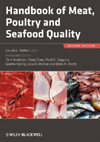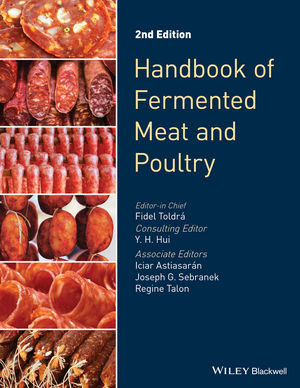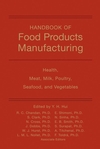Meat and poultry products are important and rich sources of highly bioavailable micronutrients and inclusion of meat and poultry products in the diet can prevent well-documented vitamin deficiencies, according to American Meat Institute (AMI) comments submitted yesterday to the 2015 U.S. Dietary Guidelines Advisory Committee. The committee requested comments on sodium reduction and food safety as well as sustainability, an issue that AMI said is clearly outside the committee’s charge and beyond its expertise.
The Institute detailed the extensive contributions that meat and poultry make to the nation’s nutrition status. “In addition to high quality protein, meat and poultry also are important and rich sources of micronutrients such as iron, zinc, selenium, and Vitamins B12, B6, thiamin, riboflavin, niacin, and potassium. Up to 16 percent of U.S. adults and more than 20 percent over 60 years old are marginally depleted in vitamin B12,” AMI wrote. “Deficiency increases with age, with about six percent of those more than 70 years old being deficient in vitamin B12. Recent research also has demonstrated the role that meat and poultry can play in ensuring adequate vitamin and mineral intake. These nutrients are either not present in plant foods or have low bioavailability.”
In particular, AMI stressed the importance of meat and poultry iron content for the 1.2 million children in America with anemia or pregnant women who are particularly at risk of anemia. “The reduction of iron in the diet could lead to deficiencies that have long-term health effects if not addressed,” AMI said. “The heme iron in meat is the most absorbable form of iron known.”
AMI also stressed the high protein content in meat and poultry and noted that per serving, meat, poultry, and fish provide more protein than dairy, eggs, legumes, or cereals, vegetables, or nuts and that protein is critical for developing, maintaining, and repairing strong muscles and it is vital for reducing the muscle loss that often occurs with aging.
The safety profiles of meat and the products also are excellent, according to AMI, and show a documented and sustained improvement during the last two decades. The Institute highlighted an 81 percent reduction of Listeria monocytogenes on RTE meat and poultry products between 2000 and 2011 and an 85 percent decline of Escherichia coli O157:H7 in raw ground beef between 2000 and 2013; a 79 percent decline in Salmonella in young chickens from the original performance standard and a 43 percent reduction from the new standard in 2012; and an 89 percent decline of Salmonella in turkey from the original performance standard and a 29 percent increase from the new standard in 2012. Centers for Disease Control and Prevention (CDC) data have shown a corresponding decline in foodborne illness historically associated with meat and poultry products, AMI said.
Regarding sodium, AMI told the committee that sodium is essential for human health and development, particularly in regulating the body’s electrolyte balance, preventing dehydration, and maintaining many of the body’s cellular functions. Salt or sodium chloride also plays a critical role in the production of meat products – whether used by large commercial processors, local butchers, or even within the consumer’s home – to improve the flavor, texture, and safety of those products.
“As an ingredient in meat products, salt is used as a preservative, which is one aspect of a multi-hurdle approach toward maintaining product safety,” AMI said. “In the last 20 years, the meat and poultry industry has also learned in more quantitative fashion the importance of sodium chloride in managing pathogenic bacterial risks presented by L. monocytogenes, Salmonella, and pathogenicE. coli in processed meat and poultry items.”
Still, sodium reduction reformulation is occurring in the meat and poultry industry and more than 50 percent of the processed meat and poultry market undergoing recent sodium reduction reformulation. AMI cited a recent study published in JAMA Internal Medicine, in which study authors analyzed sodium levels in 480 packaged and restaurant foods from 2005-2011. While the researchers did not find dramatic across-the-board reductions in sodium, they did note that some of the most significant reductions occurred in meat products, including pork (-27 percent) and sliced deli turkey breast (-21 percent).
Finally, AMI told the committee that sustainability is outside the scope of the Committee’s charge and that there is insufficient expertise on the Committee and insufficient data in the published literature to make science-based decisions in this area.
“The Dietary Guidelines Advisory Committee is comprised of experts in nutrition and epidemiology. To address the variety of issues attendant to sustainability is outside the Committee’s expertise and could dilute the importance of the Committee’s recommendations. Sustainability is a complex issue that is being addressed by various experts in a number of other forums. Until those expert panels have drawn more concrete conclusions it would be premature for the Committee to incorporate such considerations into its dietary guidance recommendations.”
AMI’s complete comments are available here.
Source: AMI





